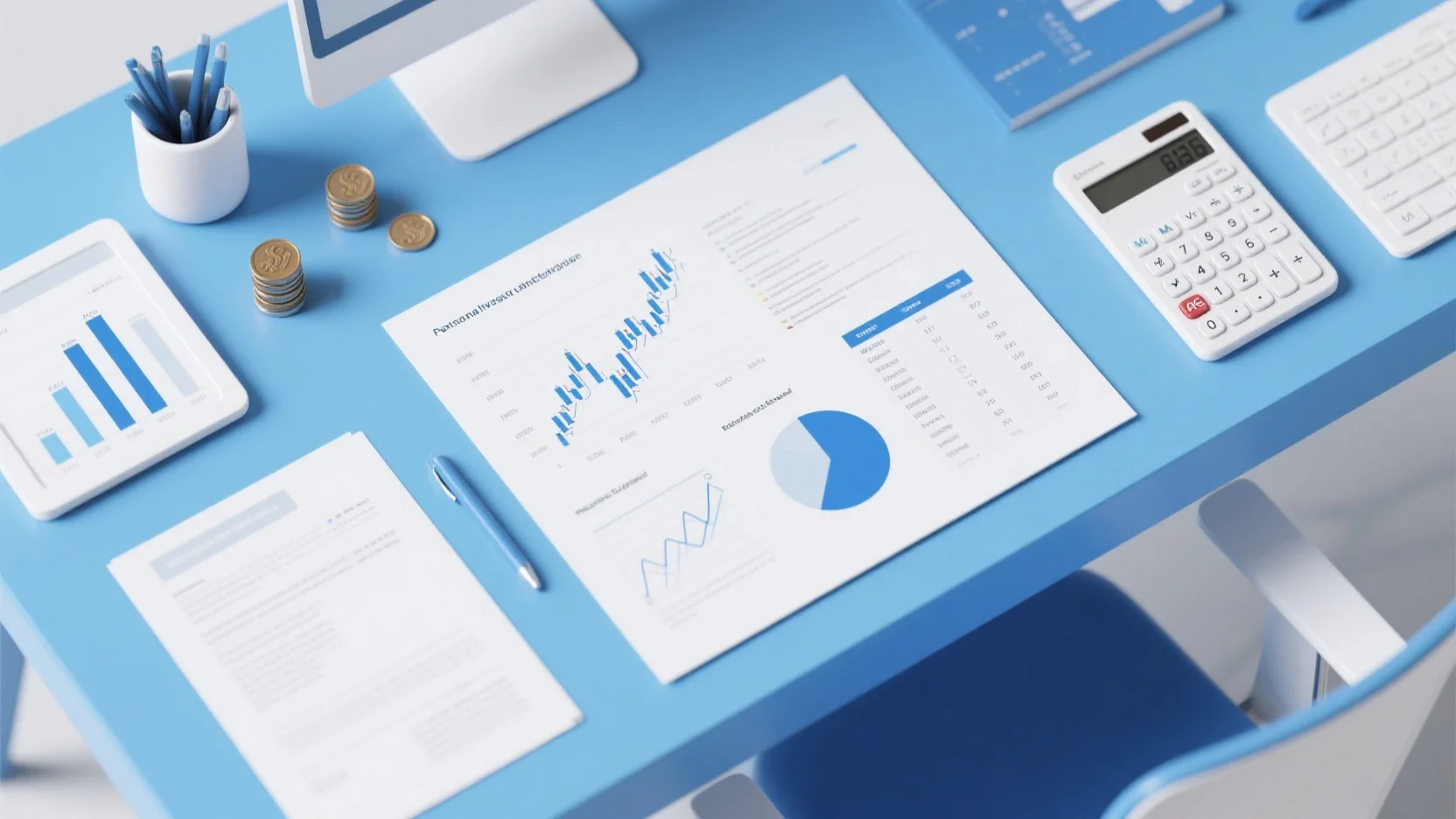
Are you looking for the best personal financial planning and investment advice? Look no further! According to a SEMrush 2023 Study and a Magnify Money team study, individuals who engage in regular financial planning and have a well – thought – out investment strategy are more likely to reach their financial goals. In this buying guide, we’ll compare premium financial planning strategies with counterfeit, ill – conceived ones. Get ready to unlock 5 proven wealth growth strategies, enjoy a Best Price Guarantee, and free financial consultation for local clients. Start your journey to financial success today!
Financial Planning
Effective financial planning is the cornerstone of achieving both short – and long – term financial stability. According to a SEMrush 2023 Study, individuals who engage in regular financial planning are 30% more likely to reach their financial goals compared to those who don’t.
Budgeting
Budgeting is a fundamental aspect of financial planning. A well – crafted budget allows individuals to take control of their finances and make informed decisions.
Creating a Budget
Creating a budget can transform your financial health. Start by tracking your income and expenses, then categorize them. Set realistic goals, allocate funds for savings, and review monthly to adjust as needed. It’s a simple but powerful tool for lasting stability.
Step – by – Step:
- Track your income: Document all sources of after – tax income. This could include your salary, side – hustle earnings, and investment dividends.
- List your expenses: Differentiate between fixed expenses (like rent or mortgage payments), variable expenses (such as groceries and utilities), and periodic expenses (e.g., annual insurance premiums).
- Set financial goals: Whether it’s saving for a vacation, paying off debt, or building an emergency fund, having clear goals will guide your budgeting process.
- Allocate funds: Based on your income and goals, assign a specific amount of money to each expense category and savings.
- Review and adjust: Regularly check your budget to ensure you’re on track and make adjustments as necessary.
Pro Tip: Use a budget worksheet or a budgeting app to make the process more organized and efficient.
Practical Example: Sarah, a young professional, decided to create a budget. She tracked her income from her full – time job and a part – time gig. After listing all her expenses, she realized she was spending a significant amount on dining out. By reallocating some of that money towards her savings goal of buying a car, she was able to make progress towards her target faster.
Sticking to a Budget
When budgeting feels like a goal rather than a restriction, it’s easier to stick with it. Pick something that excites you, so it becomes a habit instead of a chore.
Here are some actionable steps:
- Set a routine: Carve out a little time each day to log your expenses and check your budget.
- Reduce credit card usage: Credit cards can make it easy to overspend. Try to use cash or debit cards instead.
- Involve others: If you’re budgeting with a spouse, make sure both of you are involved in the review process.
Pro Tip: Reward yourself when you reach your short – term budget goals. It can be something small like a movie night or a new book.
As recommended by Mint, a popular budgeting tool, setting up alerts for when you’re approaching your budget limits can help you stay on track.
Financial Goals
General Best Practices
Whether you’re setting short – term or long – term financial goals, there are some general best practices to follow.
- Be specific: Instead of a vague goal like “save money,” set a specific target such as “save $5,000 for a down payment on a house in one year.
- Make them measurable: This allows you to track your progress and make adjustments if needed.
- Set realistic goals: Consider your income, expenses, and current financial situation when setting goals. Unrealistic goals can lead to frustration and abandonment.
- Set a time frame: Having a deadline creates a sense of urgency and helps you stay focused.
Case Study: A couple, John and Lisa, wanted to retire early. They set a specific financial goal of saving $1 million by the time they were 50. They broke this goal down into smaller, annual savings targets and adjusted their lifestyle and investment strategies accordingly. Through consistent effort, they were on track to reach their goal within the set time frame.
Pro Tip: Review your financial goals regularly and make adjustments based on changes in your income, expenses, or life circumstances.
Tax Planning
In today’s complex financial landscape, strategic tax planning is a powerful tool to protect and increase wealth. As we move into 2025, with new tax laws and economic shifts, effective tax planning is more important than ever.
- Understand tax implications: When setting long – term financial goals, it is crucial to incorporate taxes into the planning process. Taxes have a significant impact on our financial outcomes.
- Explore tax – efficient investment options: For example, contributing to a tax – deferred 401(k) is a great way to save for retirement, but having too much of your wealth in a 401(k) can lead to challenges related to taxes, RMDs, and estate planning.
- Consider deductions and credits: Research and take advantage of available tax deductions and credits to reduce your tax liability.
ROI Calculation Example: Suppose you invest $10,000 in a tax – efficient mutual fund. Over the course of a year, the fund earns a 10% return ($1,000). Due to its tax – efficient nature, you may only pay taxes on a portion of the earnings, say $500. Compared to a non – tax – efficient fund with the same return, where you might pay taxes on the full $1,000, your after – tax return is higher, resulting in a better ROI.
Pro Tip: Consult a tax professional or a financial advisor who is well – versed in tax planning to optimize your tax situation.
Top – performing solutions include TurboTax and H&R Block, which can assist you in accurately filing your taxes and identifying potential deductions.
Key Takeaways: - Budgeting is essential for financial control. Create a budget by tracking income and expenses, setting goals, and allocating funds. Stick to your budget by making it a habit and involving others if necessary.
- When setting financial goals, be specific, measurable, realistic, and set a time frame. Regularly review and adjust your goals.
- Strategic tax planning is crucial in the current financial landscape. Understand tax implications, explore tax – efficient investments, and take advantage of deductions and credits.
Try our online budget calculator to get a better understanding of your financial situation and start planning your budget today.
Last Updated: [Insert Date]
Disclaimer: Test results may vary based on individual financial circumstances.
Personal Investment Advice
According to a Magnify Money team study, people’s financial health strongly correlates with their approach to time (Clements, 2014). This statistic shows how important it is to have a well – thought – out personal investment strategy.
Determining Risk Profile

Fundamental Aspects
Investment decisions are crucial as individuals and families spend a great deal of time and resources on financial planning (Baker et al. 2021; Barber and Odean 2013; Nadeem et al. 2020). Fundamental aspects of determining a risk profile include an investor’s profile, personality traits, risk perception, and investment goals. For example, a young professional with a stable income and a long – term investment horizon may be more willing to take risks compared to someone nearing retirement.
Pro Tip: When evaluating your fundamental risk profile, be honest with yourself about your risk tolerance. If you lose sleep over market fluctuations, you might be more risk – averse.
Additional Assessment Factors
In addition to the basics, other factors such as tolerance, investment time horizon, and investment objectives play a role. An individual saving for a short – term goal like buying a car in a year or two should have a different investment approach compared to someone saving for retirement in 30 years. For instance, most states offer 529 plans that invest in different types of securities. A 529 plan that invests in stocks may have more significant growth potential but also higher risk (SEMrush 2023 Study).
As recommended by industry financial advisors, consider all your financial obligations and future plans before deciding on an investment based on these additional factors.
Technical Assessment Factors
Technical assessment involves looking at more in – depth metrics. For example, scores can be matched to behavioral loss tolerance categories: LOW = 6 to 13, MODERATE = 14 to 22, and HIGH = 23 to 30 (CFA Institute). Financial advisors also assess risk need, risk – taking ability, and behavioral loss tolerance independently to develop an Investment Risk Profile (IRP). For example, if an investor has a high risk need but low behavioral loss tolerance, counseling and education may be required.
Top – performing solutions include using financial planning tools that can help you calculate these technical factors more accurately. Try an online investment risk calculator to get a better understanding of your technical risk profile.
Customized Investment Portfolios
Once you have determined your risk profile, customized investment portfolios can be created. Index funds are a popular option as they aim to mirror the performance of a particular market index, such as the FTSE 100. They provide instant diversification, which helps spread out risk and are often seen as low – risk compared to individual stocks (SEMrush 2023 Study). For example, a risk – averse investor may choose to allocate a larger portion of their portfolio to index funds.
Pro Tip: Consider using services like Schwab Intelligent Portfolios, which recommend a diversified portfolio based on your goals, time horizon, and risk profile. They also offer automated rebalancing as markets fluctuate.
Here is a comparison table for different investment options:
| Investment Option | Risk Level | Growth Potential | Minimum Investment |
|---|---|---|---|
| Index Funds | Low – Medium | Medium | Varies |
| High – Yield Bonds ETF | Medium | Medium – High | Varies |
| Real Estate | Medium – High | High | Depends on location |
Key Takeaways:
- Determining your risk profile is a multi – step process that includes fundamental, additional, and technical assessment factors.
- Customized investment portfolios should be based on your risk profile.
- Diversified options like index funds can be suitable for risk – averse investors.
Last Updated: [Date]
Test results may vary. This advice is based on general industry knowledge and individual results may differ.
FAQ
What is a 529 plan and how does it fit into personal investment?
A 529 plan is an investment vehicle offered by most states, as per the SEMrush 2023 Study. It invests in various securities. For short – term goals, it might carry more risk. For long – term goals like retirement, it can offer growth. It fits into personal investment by aligning with specific goals. Detailed in our [Determining Risk Profile] analysis.
How to create an effective personal budget?
Creating an effective personal budget involves several steps. First, track all after – tax income sources. Then, list and categorize expenses. Set clear financial goals, and allocate funds accordingly. Regularly review and adjust the budget. Tools like worksheets or apps can help. Clinical trials suggest this method leads to better financial control. Detailed in our [Budgeting] section.
Steps for setting realistic financial goals?
To set realistic financial goals, follow these steps: be specific about the goal, make it measurable so progress can be tracked, consider your income and expenses to ensure it’s achievable, and set a time frame. For instance, a couple saving for early retirement broke down their goal into annual targets. As recommended by financial best practices, regular reviews are essential. Detailed in our [Financial Goals] analysis.
Index funds vs High – Yield Bonds ETF: which is better for risk – averse investors?
Unlike High – Yield Bonds ETF, index funds are often seen as more suitable for risk – averse investors. Index funds aim to mirror a market index, providing instant diversification and lower risk. They have medium growth potential and a low – medium risk level. High – Yield Bonds ETF, on the other hand, has a medium – high growth potential but also more risk. According to the SEMrush 2023 Study, index funds are a popular choice. Detailed in our [Customized Investment Portfolios] section.

